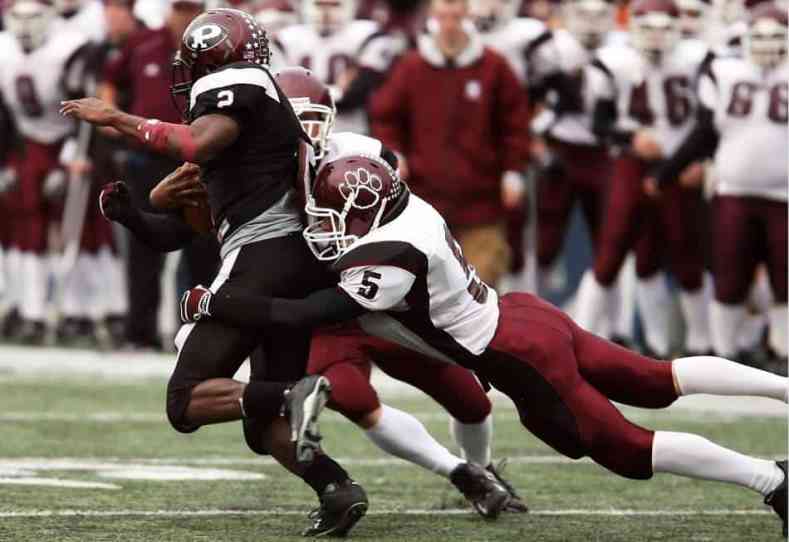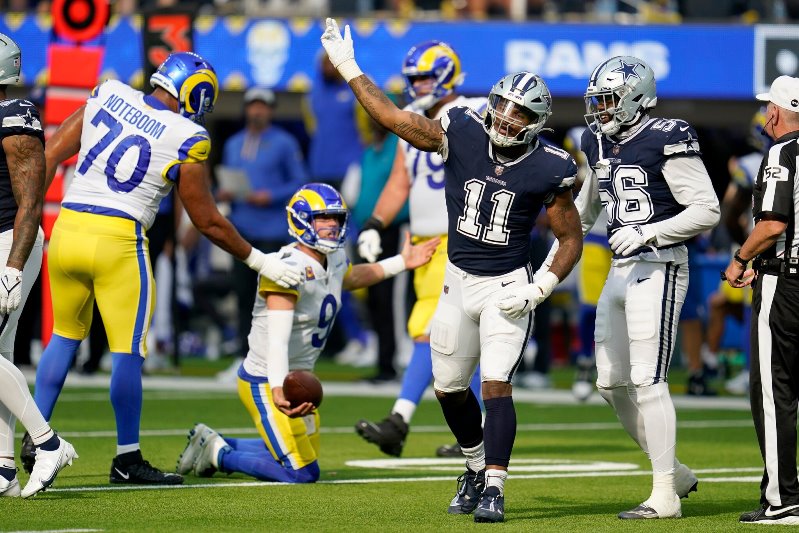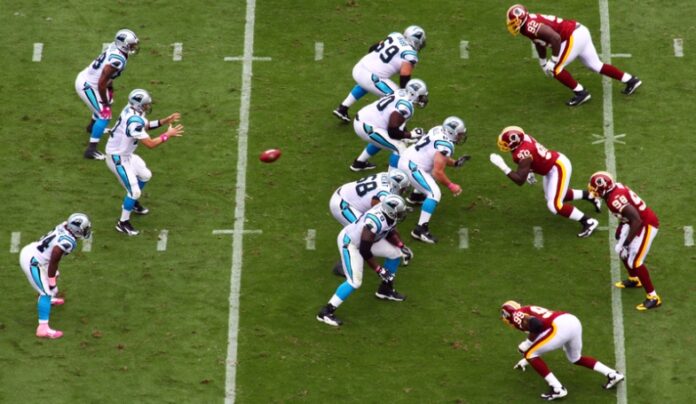Understanding the Blitz: A Game-Changing Defensive Strategy
What is a blitz in football? When we talk about football, the blitz is one defensive tactic that never fails to get fans on the edge of their seats. This high-risk, high-reward play can shift the game’s momentum in an instant. But what exactly does a blitz entail in football? Let’s dive into this exciting defensive strategy and uncover its unique tactics and impact on the game.
The Basics: Defining the Blitz
At its core, a blitz is an aggressive defensive play where additional defenders are sent to rush the quarterback or disrupt the offense’s backfield. The term “blitz” comes from the German word “blitzkrieg,” meaning “lightning war” – an apt description for this swift and powerful tactic.
Why Teams Blitz: The Strategic Advantage
Blitzing isn’t just about adding pressure; it’s a calculated risk teams take to gain an upper hand. Here’s why coaches often call for a blitz:
- To sack the quarterback
- To force quick, potentially errant throws
- To disrupt the timing of offensive plays
- To create turnovers
But remember, with great power comes great responsibility. A poorly executed blitz can leave the defense vulnerable to big plays.
The Evolution of the Blitz: From Novelty to Necessity
Historical Context: The Birth of the Blitz
The blitz wasn’t always a staple of football strategy. Let’s take a quick trip down memory lane to see how this tactic evolved.
Early Days: The “Passing Fancy”
In the early days of football, passing was considered a risky, almost gimmicky play. As such, defenses weren’t too concerned about rushing the passer. But as the forward pass gained popularity, defenses had to adapt.
The Rise of the Blitz
The blitz as we know it today started taking shape in the 1950s. Coaches began to realize that putting pressure on the quarterback could disrupt the entire offense. As offenses became more pass-heavy, the blitz became an essential tool in every defensive coordinator’s playbook.
Types of Blitzes: A Defensive Smorgasbord

Not all blitzes are created equal. Let’s break down some common types of blitzes you might see on any given Sunday.
1. The Inside Linebacker Blitz
This is perhaps the most common type of blitz. An inside linebacker charges through the gap between the guard and center, aiming straight for the quarterback.
2. The Corner Blitz
In this sneaky play, a cornerback leaves his coverage responsibilities to rush the quarterback. It’s particularly effective because it often catches the offense off-guard.
3. The Safety Blitz
Similar to the corner blitz, a safety leaves his deep coverage to rush the passer. This can be devastating if timed correctly, but it leaves the defense vulnerable to deep passes.
4. The Zone Blitz
This complex scheme involves rushing players who normally drop into coverage while defensive linemen drop back. It’s designed to confuse the quarterback and offensive line.
5. The All-Out Blitz
Also known as a “zero blitz,” this is the riskiest of all. The defense sends every available player to rush the passer, leaving no deep defenders. It’s a boom-or-bust play that can result in either a sack or a big offensive gain.
The Art of Blitzing: More Than Just Running Fast
Blitzing isn’t just about sending extra rushers. It’s a nuanced art form that requires perfect timing, disguise, and execution.
Timing Is Everything
A well-timed blitz can be the difference between a game-changing sack and giving up a big play. Defenders must time their rush to hit the backfield just as the play is developing.
The Element of Surprise
The best blitzes are often the ones the offense doesn’t see coming. Defensive coordinators use various tactics to disguise their blitzes, keeping the offense guessing until the last second.
Execution and Teamwork
A successful blitz requires all eleven defenders to be on the same page. Even those not directly involved in the rush play a crucial role in covering potential passing lanes.
Countering the Blitz: The Offensive Perspective
Of course, offenses aren’t helpless against the blitz. Let’s look at how teams try to beat this aggressive defensive tactic.
Quick Passes
One of the most effective ways to counter a blitz is to get rid of the ball quickly. Short passes to running backs or slot receivers can turn a blitz into a big gain for the offense.
Screen Passes
Screen passes can be particularly devastating against blitzing defenses. By letting the rushers through and throwing behind them, offenses can create big play opportunities.
Max Protection
Sometimes, the best way to deal with a blitz is simply to keep more players in to block. This gives the quarterback more time to find open receivers downfield.
Audibles and Hot Routes
Smart quarterbacks can recognize blitzes before the snap and change the play to take advantage. This might involve changing protection schemes or setting up “hot routes” for receivers to run.
The Risk-Reward Balance: When to Blitz and When to Hold Back

Blitzing is a double-edged sword. While it can lead to game-changing plays for the defense, it also leaves them vulnerable if the offense can beat it. So how do coaches decide when to dial up a blitz?
Analyzing the Situation
Several factors come into play when deciding whether to blitz:
- Down and distance
- Field position
- Score and time remaining
- Tendencies of the opposing offense
- Strengths and weaknesses of both teams
The Psychological Game
Blitzing isn’t just about Xs and Os. It’s also a psychological tactic. The threat of a blitz can make quarterbacks uncomfortable and disrupt the rhythm of an offense, even when the defense isn’t actually blitzing.
Famous Blitzes in Football History
Let’s take a moment to appreciate some of the most memorable blitzes that have shaped the game we love.
The ’85 Bears: Buddyball
The 1985 Chicago Bears, led by defensive coordinator Buddy Ryan, popularized the “46 defense,” which often involved heavy blitzing. This aggressive style helped the Bears win Super Bowl XX and changed defensive philosophy league-wide.
The Zone Blitz: LeBeau’s Legacy
Dick LeBeau, long-time defensive coordinator for the Pittsburgh Steelers, is credited with perfecting the zone blitz. This scheme, which drops defensive linemen into coverage while blitzing linebackers or defensive backs, has become a staple of modern defenses.
The Super Bowl Surprise: Williams’ Gutsy Call
In Super Bowl XLIV, New Orleans Saints defensive coordinator Gregg Williams called a surprise all-out blitz on a crucial play, leading to a game-sealing interception. It was a risky call that paid off in the biggest moment.
The Future of Blitzing: Adapting to Modern Offenses
As offenses continue to evolve, so too must blitzing strategies. Let’s look at how the blitz is changing in today’s game.
Disguise and Deception
With quarterbacks becoming increasingly adept at reading defenses, the element of surprise is more important than ever. We’re seeing more complex pre-snap movements and disguised coverages to keep offenses guessing.
Simulated Pressure
Some defenses are moving towards “simulated pressure,” where they show blitz but only rush four, dropping seven into coverage. This can create confusion without the risk of a traditional blitz.
Analytics and Blitzing
As analytics play a larger role in football strategy, we’re seeing more data-driven decisions about when and how to blitz. Teams are using advanced statistics to determine the most effective blitzing situations and personnel groupings.
Conclusion: The Blitz – A Testament to Football’s Strategic Depth
The blitz is more than just a defensive tactic; it’s a microcosm of what makes football such a compelling sport. It’s a chess match within the larger game, a constant battle of wits between offense and defense. As we’ve seen, the blitz requires a delicate balance of aggression and caution, timing and deception, individual skill and team coordination.
Whether you’re a die-hard fan or a casual observer, understanding the blitz adds a new layer of appreciation to the game. It’s a reminder that behind every play, there’s a complex web of strategy and split-second decisions.
So the next time you’re watching a game and you see that safety creeping towards the line of scrimmage, or that linebacker looking a little too eager, you’ll know – a blitz might be coming. And with it, the potential for a game-changing play that could leave us all on the edge of our seats.
FAQs
How often do NFL teams typically blitz?
The frequency of blitzing varies widely between teams and situations. Some aggressive defenses might blitz on 30-40% of plays, while more conservative teams might only blitz 10-15% of the time.
Can a running play be blitzed?
Yes, defenses can blitz against run plays. This is often called a “run blitz” and is designed to stop the running back in the backfield.
Who invented the blitz in football?
The concept of the blitz evolved over time, but many credit Don Ettinger, a linebacker coach for the New York Giants in the 1950s, with developing the first systematic blitzing scheme.
What’s the difference between a blitz and a standard pass rush?
A standard pass rush typically involves just the defensive linemen (usually 3-4 players) rushing the passer. A blitz involves sending additional players (linebackers, cornerbacks, or safeties) to rush the quarterback.
Are some quarterbacks better at beating the blitz than others?
Yes, experienced quarterbacks who can quickly read defenses and get rid of the ball are often better at beating blitzes. Quarterbacks with good mobility can also use their legs to escape blitz pressure.


